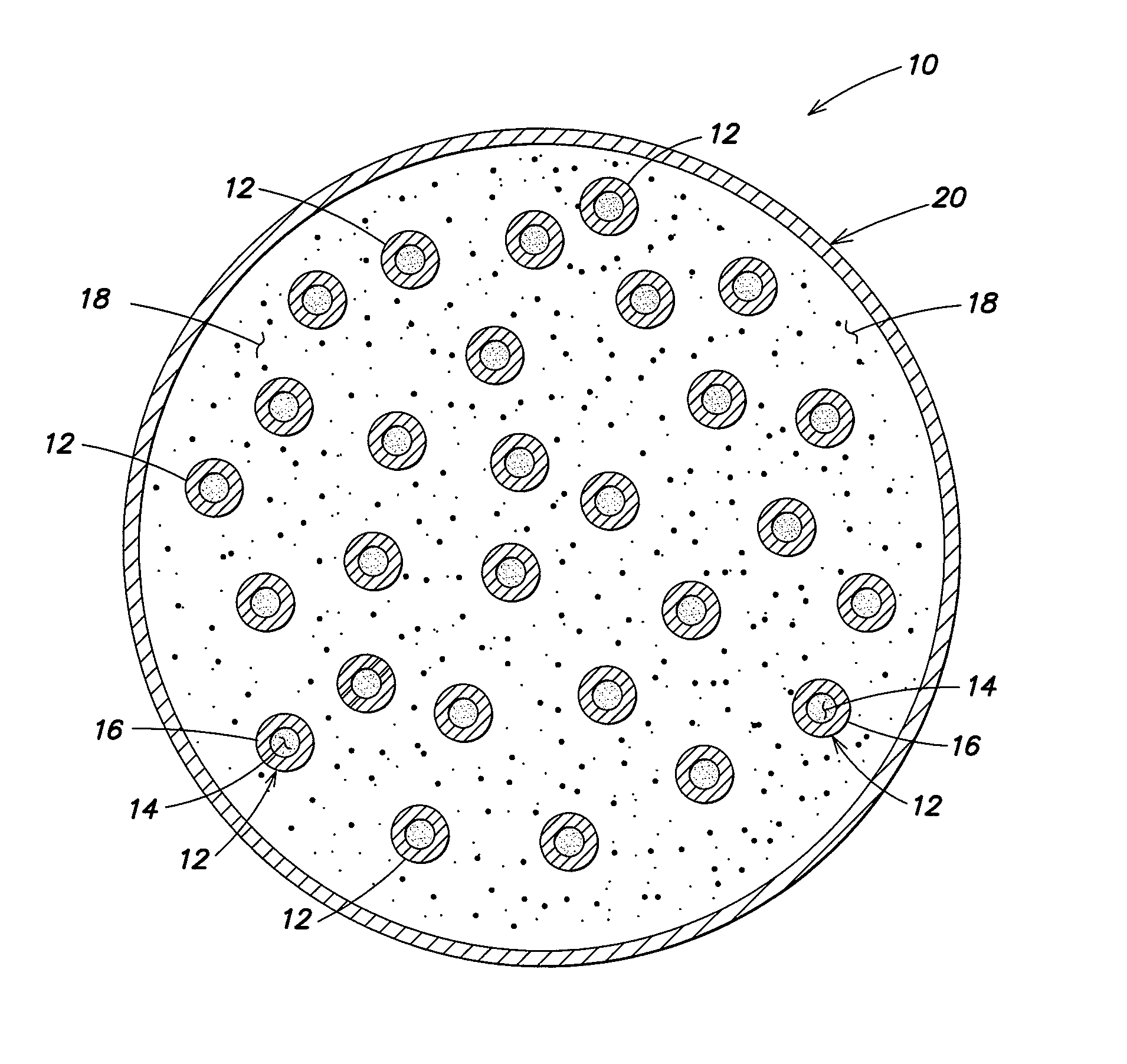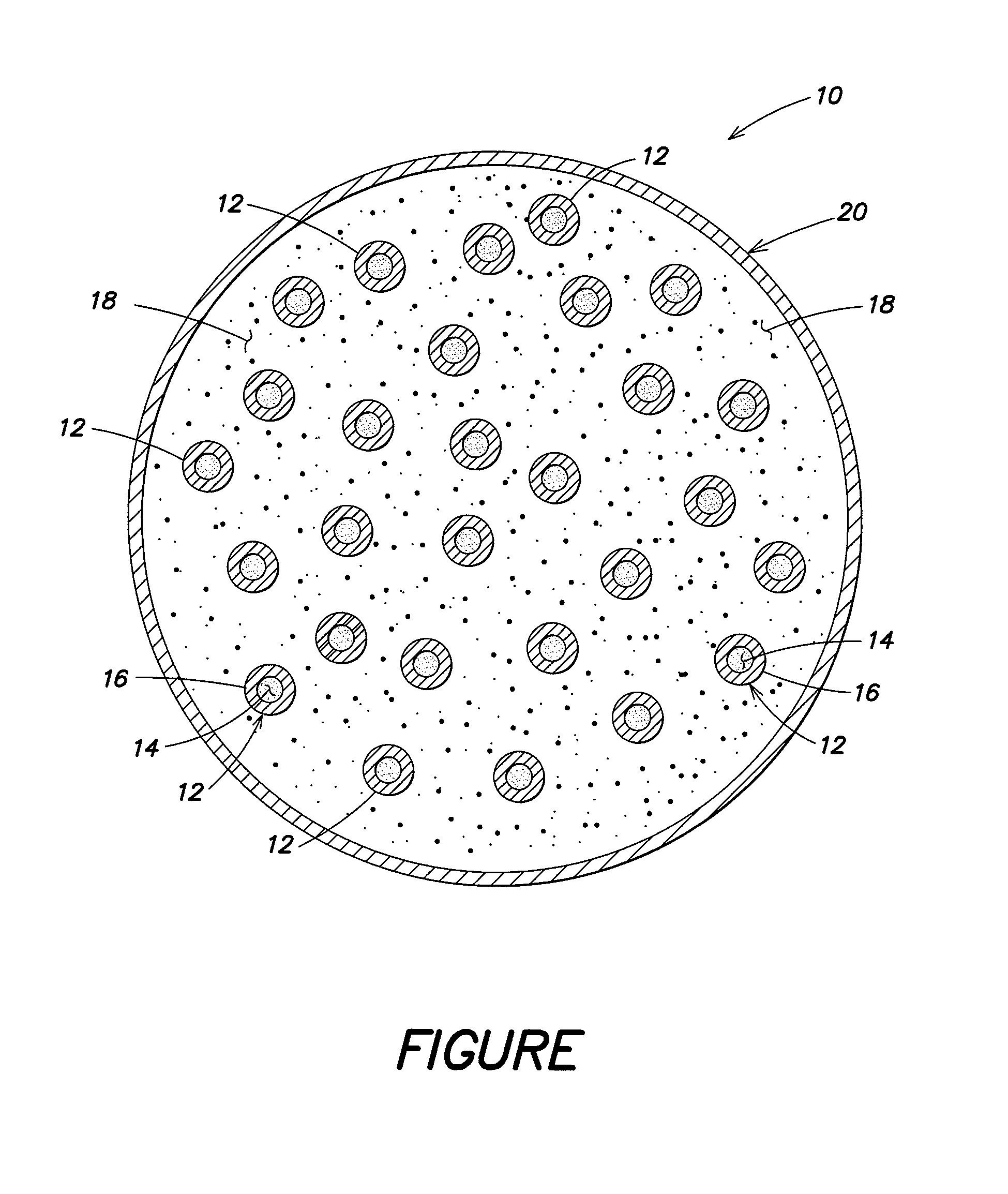Exothermic alloying bimetallic particles
a technology of alloying bimetallic particles and exothermic alloying, which is applied in the direction of coatings, transportation and packaging, explosives, etc., can solve the problems of limiting reaction completion, requiring relatively expensive and elaborate manufacturing methods, and achieve the effect of enhancing the alloying process
- Summary
- Abstract
- Description
- Claims
- Application Information
AI Technical Summary
Benefits of technology
Problems solved by technology
Method used
Image
Examples
example
[0013]The following is an exemplary embodiment of the method of the present invention for preparation of a bimetallic particle comprising an aluminum core and a nickel shell. The method can be divided into two stages: a first stage that involves the pretreatment of aluminum particles with zinc; and a second stage where the zinc pretreated aluminum particles are plated or coated with nickel. The first stage is utilized to remove any aluminum oxide that has formed on the outer surface of the aluminum, and the zinc applied to the outer surface of the aluminum prevents the reformation of aluminum oxide on the outer surface of the aluminum.
[0014]In the first stage, a first step is to mix 11 mL of zincate solution, which is a zinc / gluconate solution having an approximate pH of 13 with 100 mL of deionized water. The zincate solution is commercially available from Caswell Plating Company. Next, the solution is stirred relatively rapidly with a magnetic PTFE stirbar and the solution is broug...
PUM
| Property | Measurement | Unit |
|---|---|---|
| sizes | aaaaa | aaaaa |
| pH | aaaaa | aaaaa |
| temperature | aaaaa | aaaaa |
Abstract
Description
Claims
Application Information
 Login to View More
Login to View More - R&D
- Intellectual Property
- Life Sciences
- Materials
- Tech Scout
- Unparalleled Data Quality
- Higher Quality Content
- 60% Fewer Hallucinations
Browse by: Latest US Patents, China's latest patents, Technical Efficacy Thesaurus, Application Domain, Technology Topic, Popular Technical Reports.
© 2025 PatSnap. All rights reserved.Legal|Privacy policy|Modern Slavery Act Transparency Statement|Sitemap|About US| Contact US: help@patsnap.com


